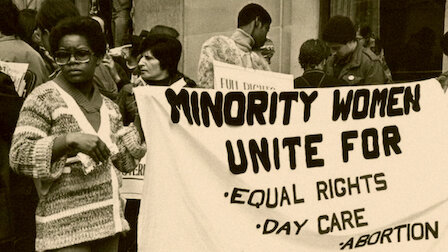
Amend: The Fight for America
Netflix (2021)
Film Review
Episode 4 explores women’s fight for equality under the 14th amendment.
Once again, it begins with historic Supreme Court cases
In Bradwell vs the State of Illinois (1872), a female publisher sued the state for refusing her admission to a state law school. The SCOTUS ruled discrimination against women is allowed because women are naturally “more timid and delicate.”
Prior to her appointment to the Supreme Court, the late Ruth Bader Ginsberg specialized in sex discrimination cases. Her first successful Supreme Court case acknowledged the US military discriminated against female officers by failing to provide housing for their husbands.
In Griswold vs Connecticut (1965), the Supreme Court overturned a Connecticut law prohibiting the use of birth control. The SCOTUS ruled it violated a couple’s right to marital privacy.
This would pave the way for the historic Roe vs Wade decision (1973) overturning most state abortion laws because they violated a woman’s right to privacy. The written majority opinion acknowledged the state also had an obligation to protect the interests of a fetus because it can’t speak for itself. Owing to the court’s inability to pinpoint exactly when life begins, they held a woman only had a right to terminate her pregnancy in its earliest stages.
The last third of the episode focuses on feminists’ efforts pass the Equal Rights Amendment. The latter states explicitly states that 14th Amendment equal protection apply to women as well as men. Approved by Congress in 1979, the ERA amendment was three states short of the required 38 when the deadline expired in 1982.
